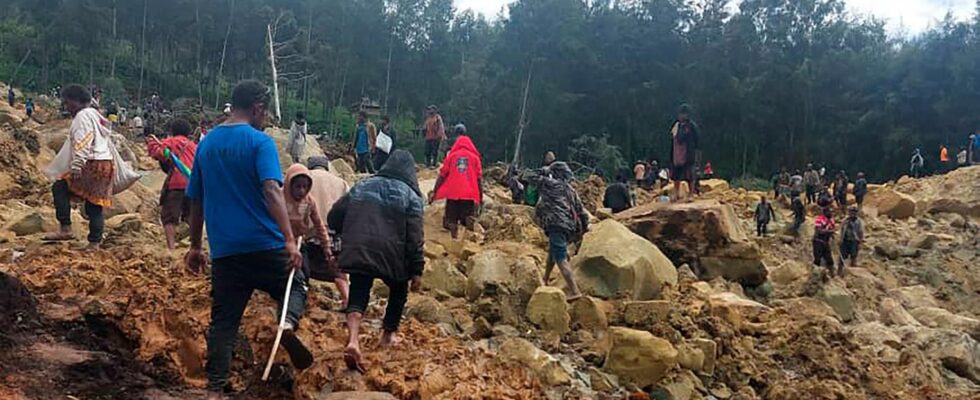Natural disaster
Landslide in Papua New Guinea: Disaster management fears 2000 deaths
People near the village of Yambali in Papua New Guinea
© Benjamin Sipa/International Organization for Migration / AP
The extent of the landslide in Papua New Guinea is devastating. The disaster control agency says there are at least 2,000 victims. Rescuers still hope to find survivors.
The national disaster management agency in Papua New Guinea fears at least 2000 deaths after the devastating Landslide on Friday. This is according to a statement from the government authority, which was made available to the German Press Agency on Monday. The landslide occurred in the night of Friday (local time) in a remote highland area of the Pacific island state. The International Organization for Migration (IOM) in Papua New Guinea had estimated the number of dead on Sunday at around 670.
The main road to the region is completely blocked, the disaster relief letter addressed to the United Nations in the capital Port Moresby continued. “The situation remains unstable as the landslide continues to slowly shift, posing an ongoing danger to both rescue teams and survivors.”
Papua New Guinea: Chance of rescuing survivors is slim
Rescue workers are fighting desperately to rescue survivors from the earth and rock masses. “We can only hope that in the short time we have left we can at least help to save more lives,” Australian broadcaster AAP quoted IOM mission chief Serhan Aktoprak as saying on Monday. “But time is working against us.” Aktoprak told the German Press Agency: “Three and a half days after the landslide, the chances are very slim.”
Videos from the disaster area showed people walking barefoot and using only shovels to try to find relatives and friends under the huge masses of rubble. According to Aktoprak, most of the houses were buried six to eight meters deep under the rubble. The United Nations has meanwhile helped set up evacuation centers for those affected.


